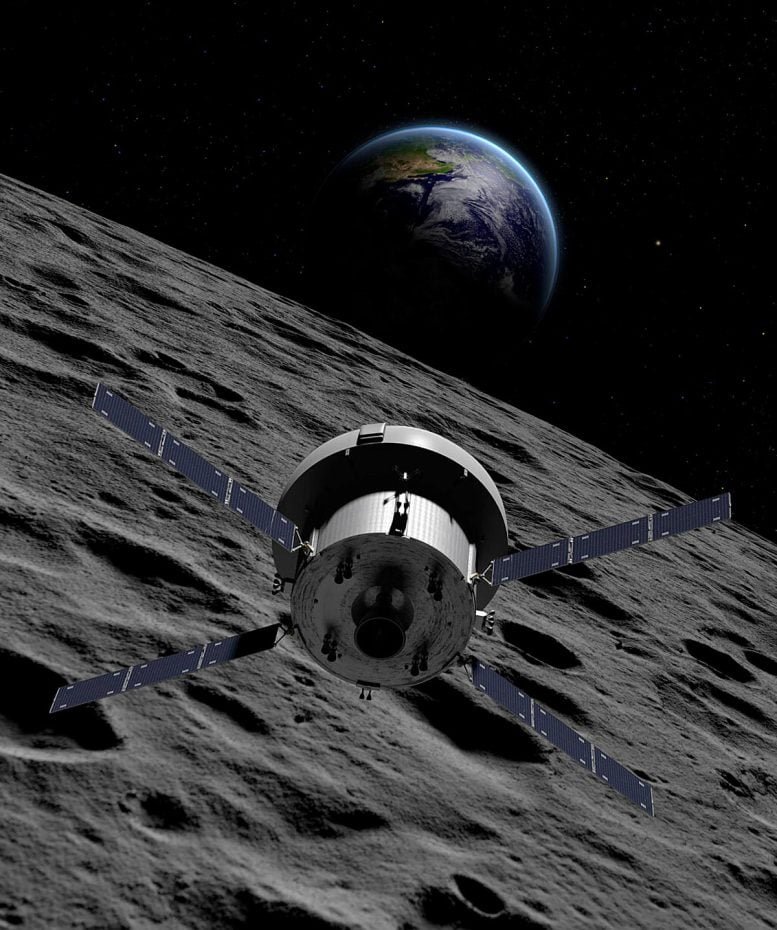
Artemis II builds on the success of the uncrewed Artemis I in 2022, and will demonstrate a broad range of capabilities needed on deep space missions. The Artemis II flight test will be NASA’s first mission with crew aboard the SLS (Space Launch System) rocket and Orion spacecraft and will pave the way to land the first woman on the Moon on Artemis III. Credit: NASA
Artemis Campaign Updates and Goals
NASA announced on Tuesday significant updates to its Artemis campaign. These updates aim to lay the groundwork for long-term scientific exploration on the Moon. The program’s ambitious goals include landing the first woman and the first person of color on the lunar surface, as well as preparing for human expeditions to Mars, all for the greater good of humanity.
Adjusted Schedules for Artemis Missions
To ensure these missions are carried out safely, NASA officials have revised the schedules for Artemis II and Artemis III. This adjustment allows teams to address challenges linked to first-time developments, operations, and integration. Artemis II, the first crewed mission, is now slated for September 2025. It will orbit the Moon. Artemis III, planned for a September 2026 launch, aims to land astronauts near the lunar South Pole. Artemis IV, the first mission to the Gateway lunar space station, remains on track for 2028.
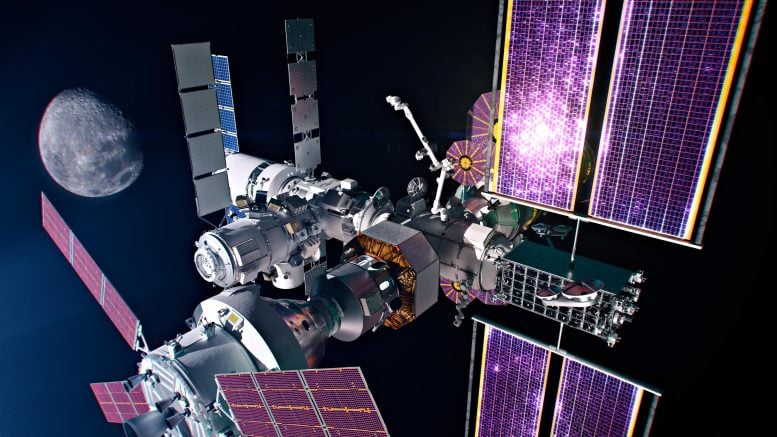
The Gateway space station will be humanity’s first space station around the Moon as a vital component of the Artemis missions to return humans to the lunar surface for scientific discovery and chart the path for the first human missions to Mars. Astronauts on Gateway will be the first humans to call deep space home during missions where they will use Gateway to conduct science and prepare for lunar surface missions. Credit: NASA, Alberto Bertolin, Bradley Reynolds
Emphasis on Astronaut Safety and Partnerships
“We are returning to the Moon in a way we never have before, and the safety of our astronauts is NASA’s top priority as we prepare for future Artemis missions,” said NASA Administrator Bill Nelson. “We’ve learned a lot since Artemis I, and the success of these early missions relies on our commercial and international partnerships to further our reach and understanding of humanity’s place in our solar system. Artemis represents what we can accomplish as a nation – and as a global coalition. When we set our sights on what is hard, together, we can achieve what is great.”
Challenges and Resolutions in Artemis Missions
Ensuring crew safety is the primary driver for the Artemis II schedule changes. As the first Artemis flight test with crew aboard the Orion spacecraft, the mission will test critical environmental control and life support systems required to support astronauts. NASA’s testing to qualify components to keep the crew safe and ensure mission success has uncovered issues that require additional time to resolve. Teams are troubleshooting a battery issue and addressing challenges with a circuitry component responsible for air ventilation and temperature control.
NASA’s investigation into unexpected loss of char layer pieces from the spacecraft’s heat shield during Artemis I is expected to conclude this spring. Teams have taken a methodical approach to understand the issue, including extensive sampling of the heat shield, testing, and review of data from sensors and imagery.
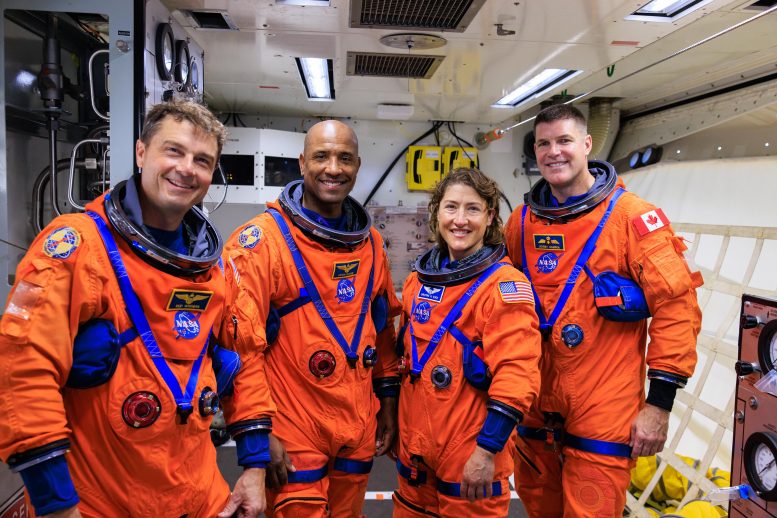
Artemis II NASA astronauts (left to right) Reid Wiseman, Victor Glover, and Christina Koch, and CSA (Canadian Space Agency) astronaut Jeremy Hansen stand in the white room on the crew access arm of the mobile launcher at Launch Pad 39B as part of an integrated ground systems test at Kennedy Space Center in Florida on Wednesday, September 20, 2023. The test ensures the ground systems team is ready to support the crew timeline on launch day. Credit: NASA
Coordinating Artemis III with Learning from Artemis II
The new timeline for Artemis III aligns with the updated schedule for Artemis II, ensures the agency can incorporate lessons learned from Artemis II into the next mission, and acknowledges development challenges experienced by NASA’s industry partners. As each crewed Artemis mission increases complexity and adds flight tests for new systems, the adjusted schedule will give the providers developing new capabilities – SpaceX for the human landing system and Axiom Space for the next-generation spacesuits – additional time for testing and any refinements ahead of the mission.
“We are letting the hardware talk to us so that crew safety drives our decision-making. We will use the Artemis II flight test, and each flight that follows, to reduce risk for future Moon missions,” said Catherine Koerner, associate administrator, Exploration Systems Development Mission Directorate at NASA Headquarters in Washington. “We are resolving challenges associated with first-time capabilities and operations, and we are closer than ever to establishing sustained exploration of Earth’s nearest neighbor under Artemis.”
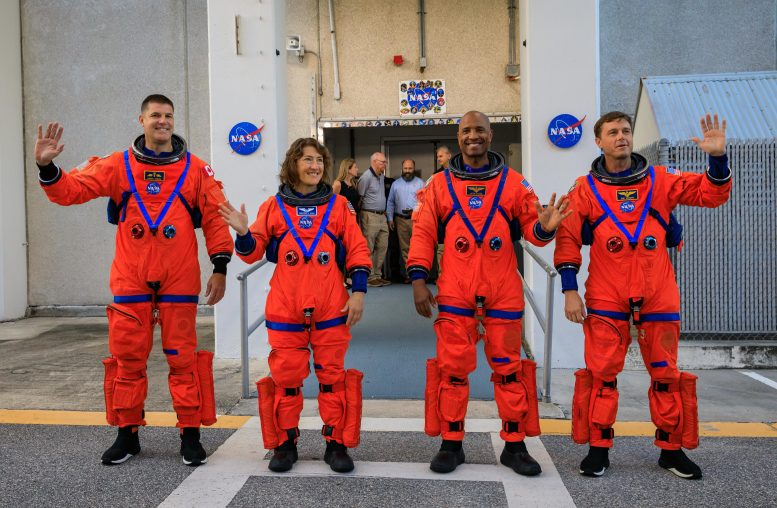
Artemis II crew members (from left) CSA (Canadian Space Agency) astronaut Jeremy Hansen, and NASA astronauts Christina Koch, Victor Glover, and Reid Wiseman walk out of Astronaut Crew Quarters inside the Neil Armstrong Operations and Checkout Building to the Artemis crew transportation vehicles prior to traveling to Launch Pad 39B as part of an integrated ground systems test at Kennedy Space Center in Florida on Wednesday, September 20, to test the crew timeline for launch day. Credit: NASA/Kim Shiflett
Further Schedule Reviews and Future Plans
In addition to the schedule updates for Artemis II and III, NASA is reviewing the schedule for launching the first integrated elements of Gateway, previously planned for October 2025, to provide additional development time and better align that launch with the Artemis IV mission in 2028.
NASA also shared that it has asked both Artemis human landing system providers – SpaceX and Blue Origin – to begin applying knowledge gained in developing their systems as part of their existing contracts toward future variations to potentially deliver large cargo on later missions.
Emphasizing Crew Safety and Partner Commitment
“Artemis is a long-term exploration campaign to conduct science at the Moon with astronauts and prepare for future human missions to Mars. That means we must get it right as we develop and fly our foundational systems so that we can safely carry out these missions,” said Amit Kshatriya, deputy associate administrator of Exploration Systems Development, and manager of NASA’s Moon to Mars Program Office at headquarters. “Crew safety is and will remain our number one priority.”
NASA leaders emphasized the importance of all partners delivering on time so the agency can maximize the flight objectives with available hardware on a given mission. NASA regularly assesses progress and timelines and as a part of integrated programmatic planning to ensure the agency and its partners can successfully accomplish its Moon to Mars exploration goals.
NASA’s Comprehensive Exploration Strategy
With Artemis, NASA will explore more of the Moon than ever before, learn how to live and work away from home, and prepare for future human exploration of the Red Planet. NASA’s SLS (Space Launch System) rocket, exploration ground systems, and Orion spacecraft, along with the human landing system, next-generation spacesuits, Gateway lunar space station, and future rovers are NASA’s foundation for deep space exploration.





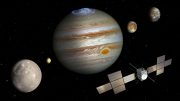



.